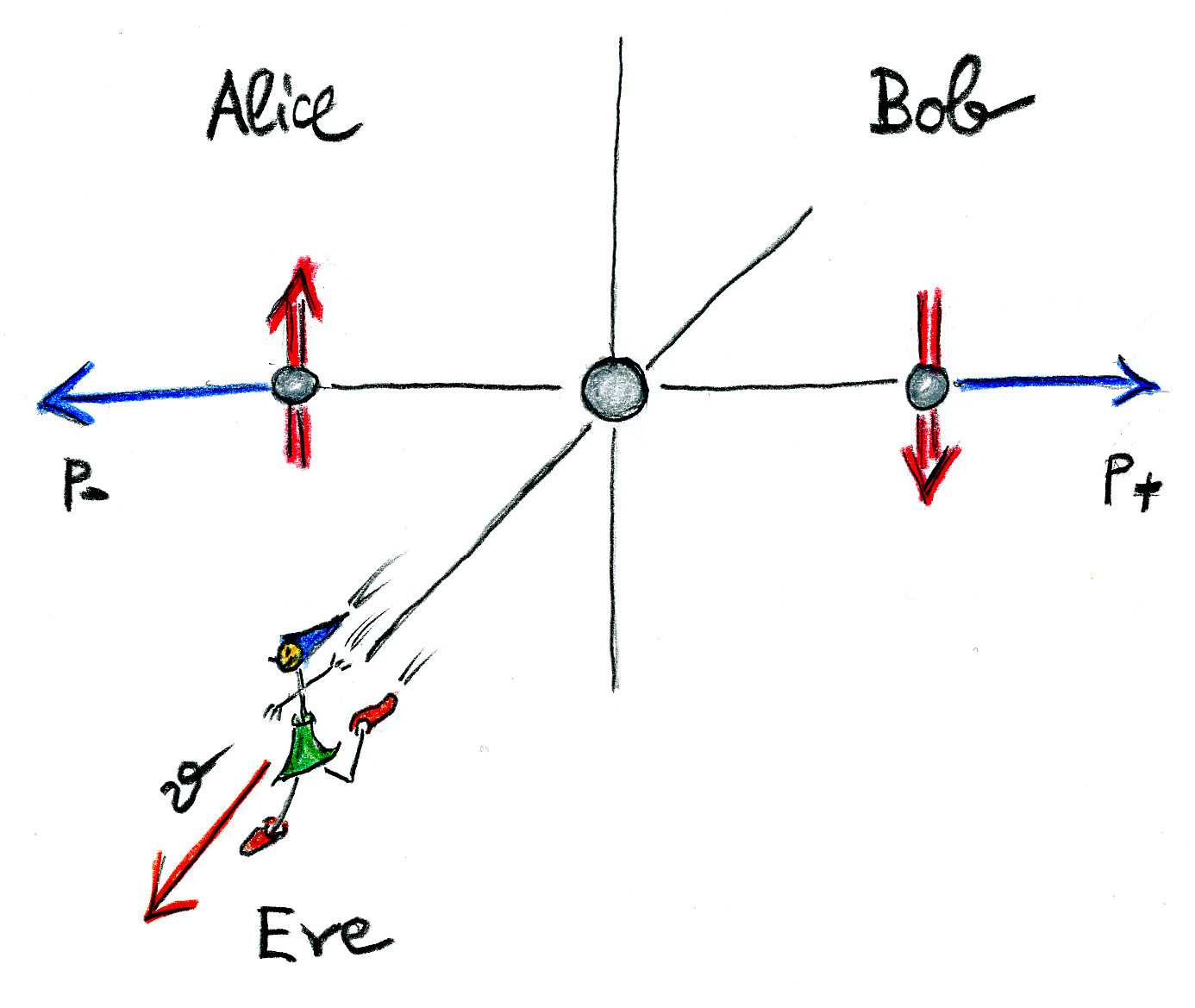Mathematical characterization of entanglement:
higher dimensional composite systems – from qubits to qudits, entanglement measures, entanglement witnesses and geometry of quantum states, relativistic effects in quantum entanglement, noninertial frames, Unruh effect, gravitation and black holes
Relativistic entanglement:
Entanglement of two propagating particles with spin, Alice & Bob, considered as a 4 qubit system and observed by the relativistically boosted observer Eve.
For reference, see N. Friis, R. A. Bertlmann, M. Huber and B. C. Hiesmayr, Phys. Rev. A81, 042114 (2010); arXiv: 0912.4863 [quant-ph].
Alice cannot communicate anymore with Bob:
Alice and Bob share a maximal entangled state of two fermions. Alice, when falling into a black hole, although remaining entangled with Bob, cannot communicate on a quantum information level with Bob who is resting near the horizon. Thus quantum mechanics cannot overcome relativity !
For reference, see “Residual entanglement of accelerated fermions is not nonlocal”, N. Friis, P. Köhler, M. Martin-Martinez, and R.A. Bertlmann, Phys. Rev. A84, 062111 (2011), and arXiv:1107.3235 [quant-ph].
Features of Entanglement – Selected Papers
Entanglement of qubits and qudits, entanglement witness
R.A. Bertlmann, H. Narnhofer, and W. Thirring: A Geometric Picture of Entanglement and Bell Inequalities
R.A. Bertlmann and P. Krammer: Bloch vectors for qudits
R.A. Bertlmann and P. Krammer: Entanglement witnesses and geometry of entanglement of two-qutrit states
Quantum teleportation, entanglement swapping
R.A. Bertlmann, H. Narnhofer, and W. Thirring: Time-ordering dependence of measurements in teleportation
Entanglement of multi-partite systems, GHZ states



